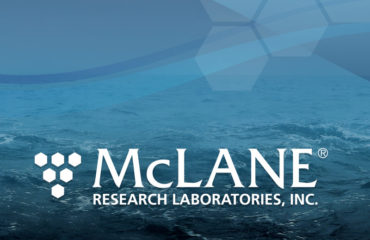
(Falmouth, MA) – In collaboration with McLane Research Laboratories, the Anderson Lab of Woods Hole Oceanographic Institution (WHOI) and the Roesler Lab in the Department of Earth and Oceanographic Science at Bowdoin College, have simultaneously deployed a McLane Environmental Sample Processor (ESP) and an Imaging FlowCytobot (IFCB) side by side in the flowing seawater laboratory at the Bowdoin College Schiller Coastal Studies Center on Orr’s island, Maine.
The project tracked the concentration of Alexandrium catenella cells throughout the May – June algal bloom period. Using the instruments side by side provided a comparison of two methods for estimating Alexandrium cell concentration. The Bowdoin marine wet lab continuously pumps water from Harpswell Sound, a water body extending from Casco Bay that is purported to be a natural incubator for this phytoplankton species. The ESP detected cells throughout the period, with a high point of 2000 cells per liter.
In addition to the dual deployment of the IFCB and ESP, the team tested the prototype of the ESP’s ‘short pucks’. This prototype project, funded by the National Oceanic and Atmospheric Administration (NOAA), reduced the size of the ESP’s titanium reaction chambers, increasing the ESP sample capacity by 50%.
Thomas L. Fougere, the McLane engineer spearheading this project will be presenting a poster on the deployment and the ‘short pucks’ at OceanObs’19 in Honolulu, Hawaii September 16-20. Fougere explains: “Preparation for these types of deployments begins months ahead of time. We have to create calibration curves specific to the targeted organisms and deal with logistics specific to the instrument installation and communications. This deployment was particularly challenging seeing as we tested the ‘short puck’ improvements unaware of what curve balls this could present.” Fougere added, “Completing the deployment with success was very gratifying and gets us that much closer to transitioning the ‘short pucks’ from an R&D project to a commercially viable product.”
Dr. Collin Roesler of Bowdoin College states that “Alexandrium is the putative organism responsible for paralytic shellfish poisoning in coastal Maine waters. Although found along the Gulf of Maine coast, Harpswell Sound presents a unique environment for the incubation of Alexandrium populations. The Sound is characterized by a reverse estuarine circulation driven by strong freshwater input at the mouth from the Upstream Kennebec River. This results in net transport into the sound and retention of surface waters at the head, providing perfect conditions for bloom development. Periodic flushing releases the cells into Maine coastal current for transport down the coast.”
The ESP is an in-situ electromechanical, fluidics system designed to collect discrete water samples, concentrate microorganisms or particles, and automate application of molecular probes in order to identify microorganisms and their gene products.
The IFCB is an in-situ automated submersible microscope that generates images of individual cells or particles in-flow taken from the aquatic environment that can be used for taxonomic classification.
Watch a video about the IFCB
https://mclanelabs.com/ifcb-videos/



